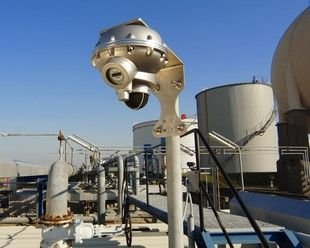Instant detection of gas leaks can be achieved using ultrasonic detection. Ultrasonic detection technology has been around for decades and used in machinery and equipment inspection tasks. Applicability of acoustic sensing in gas detection arise thanks to electronics and software development.

A leak of any pressurized gas generates a characteristic sound, frequencies of such sounds yields beyond human hearing frequencies, above 20 KHz. Furthermore, this gas leak acoustic signature has patterns for amplitude, frequency and duration, which make it distinguishable from background noise or plant-machinery sounds. And is here where electronics, software and neural network technology come handy, providing accuracy, noise discrimination and speed for a better performance compared with chemical and optical sensing technologies.
But remember that is engineering we’re talking about, so there are tradeouts. Let’s se features, advantages and limitations:
- applicability for any type of gas, either toxic, combustible or inert.
- barely affected by wind direction
- barely affected by rain and adverse weather
- not affected by dilution or stratification
- not suitable for low pressure leaks (below 90 psi)
- broad detection coverage (> 15 m radius)
- affected by ground level reflection
- measurement units are not standard among manufacturers, sound pressure level (dB SPL) for sensing and leak rate (kg/s) for alarm levels
TEST, COMMISSIONING AND CALIBRATION
Tasks required for test, commissioning and calibration vary widely, from acoustic profile checking, hardware and software self-checking to inert gas release test.
At the end, a sound engineering knowledge, experience and criteria are required for design a gas detection system based on ultrasonic technologies. As this is a field under heavy development, my recommendation is to go all the way down with the preferred manufacturer, for evaluating and re-evaluating possible solutions.